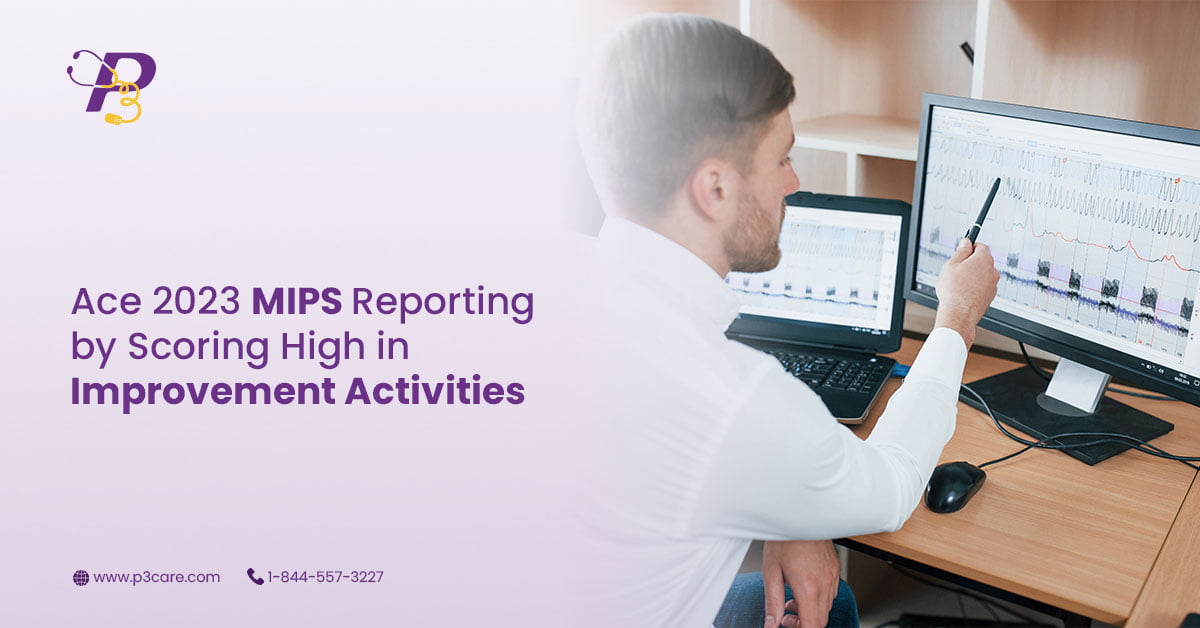Facing MIPS Reporting Hurdles? Learn How to Navigate Them!
Everyone talks about the MIPS program and its requirements, which keep changing from time to time. Okay, that’s one side of the picture, and clinicians are very familiar with this aspect of MIPS reporting. But what about the MIPS-related issues that persist with this much modification to the final rules? Is there any way to deal with them?
Here, let us tell you that MIPS policy revisions are necessary for achieving certain healthcare goals. For instance, one of them is the implementation of a value-based healthcare model in the healthcare system. Likewise, improvement and reduction or elimination of reporting issues are another motive. So, we can say that despite all the potential benefits, MIPS has been the biggest hurdle of all time. It is not other than the reporting itself!
In this blog, we’ll identify the two most common MIPS reporting problems of all time. And what are the strategic solutions to cope with them?
Did you know?
A study reveals that MIPS reporting causes financial burdens ranging from $30,000 to $50,000 annually. Isn’t it a big figure for an average healthcare provider? Although this study reveals the miscellaneous concepts of MIPS participants about the program. Anyhow, the overall outcomes were clear, as the majority were taking MIPS reporting as a burden.
Well, that’s not the intention of CMS at all while creating the MIPS reporting framework under QPP. But it is also true on its own that things don’t always go as systematically and smoothly as we plan. So, the same happened in the case of reporting difficulties caused by the MIPS program.
How has MIPS 2023 Reporting gone?
The Pandemic COVID-19 has given a tough time to all professionals belonging to any field. However, among those who have taken the utmost stress in this period were healthcare providers. The MIPS-eligible providers were especially working day and night to cater to patients in times of need.
CMS has announced reporting relaxations, considering COVID-19 a PHE. Anyhow, from the start of MIPS 2022, the situation was quite in control. So, with the MIPS 2023 reporting policy, CMS was back on track with the new reporting requirements. The performance threshold has been revised and finalized to 9% for MIPS 2022 and 2023.
And now, in FY 2023, the new reporting pathway, named MVPs, has started as a voluntary reporting option. Meanwhile, we have seen the removal of the CMS web interface as a collection type for MIPS reporting. Similarly, we have EHR certification criteria for safe MIPS data collection and integration.
MIPS Reporting Problems: A Nightmare for Clinicians
Let’s move our discussion forward on reporting issues that have been problematic from the beginning. Here we have two primary problems in the MIPS reporting program that need to be addressed:
- Inattention to Better Patient Outcomes
- The Administrative Burden of Reporting
Inattention to Better Patient Outcomes
Patients’ outcomes are essential for evaluating how well a certain implementation works. However, the strict compliance requirements of the MIPS program result in inattention to these outcomes. Overall, if we analyze, MIPS programs focus on how healthcare processes are carried out. Meanwhile, it has not much to do with the final results caused by these processes. This has been a problematic thing about the MIPS program, but it’s not true that CMS is not concerned. The federal government has plans to address the issues. It is now taking active measures to refine the MIPS protocols for better patient outcomes.
The Administrative Burden of Reporting
When a clinician participates in MIPS reporting, it adds to their responsibilities. Along with the daily grind of job tasks, they have to work hard to compete in MIPS. At times, it becomes exhausting for them to manage on two fronts simultaneously. This is primarily because of a lack of time, and sometimes it may be an effort. The clinicians often get distracted or their attention diverts from care delivery. The situation is becoming tougher for small practices because they lack resources. But one thing not to forget here is that MIPS offers incentives, but they also offer penalties. So, performing well in the performance year and reporting time are the keys.
How can I Overcome the Reporting Obstacles?
When there are problems, there is a solution too. And if we haven’t just found the solution, then it simply means we are not trying well or are still lacking. Here we suggest some possible solutions to mitigate these obstacles in MIPS reporting.
- Early Eligibility Determination
- Integration of ONC-certified Healthcare Technology
Early Eligibility Determination
There is a particular reporting and eligibility criterion for MIPS clinicians. By pre-outlining the benchmarks and other specifications, you can select the target measures. Later, after early selection, you can start recording your best-performing measures too. Both of these practices will help you score the maximum payment adjustments.
Ensure eligibility and compliance through a systematic approach, as given below:
- Check your participation status (individual, virtual group, or APM entity).
- Confirm your choice of reporting framework.
- Assess all the factors impacting reporting requirements.
- Review the current performance year’s quality measures thoroughly.
- Align with all the reporting requirements (eCQMs, claims measures, etc.).
- Stay updated on eligibility for strategic MIPS reporting planning.
Integration of ONC-certified Healthcare Technology
CMS has simplified the data aggregation and sharing protocols for clinicians. At a time when the world is inclined towards automation the most, the use of EHRs is a great approach. Last year, CMS provided a certification criterion for using EHRs, i.e., 2016 Cures Edition. In the MIPS 2024 final rule, CMS strictly asks all MIPS-eligible clinicians to integrate ONC-certified IT technology.
Reporting eCQMs via EHRs minimizes the need for manual data collection and reporting. So, the administrative burden is reduced to a great extent for the clinicians. Consequently, they spare some time to focus on their areas for improvement for better care outcomes.
Conclusion
MIPS reporting has become mandatory for MIPS-eligible practitioners. Therefore, it is necessary to minimize the process’s obstacles and concerns. If you are a MIPS reporting-eligible clinician, this blog will be very useful for you.
To discuss your reporting problems in detail, you can contact P3 Care for MIPS consulting services. Our experts will help you develop a strategic reporting plan beforehand. Overall, our MIPS consulting services will maximize your MIPS scores.














Leave a Reply
Want to join the discussion?Feel free to contribute!